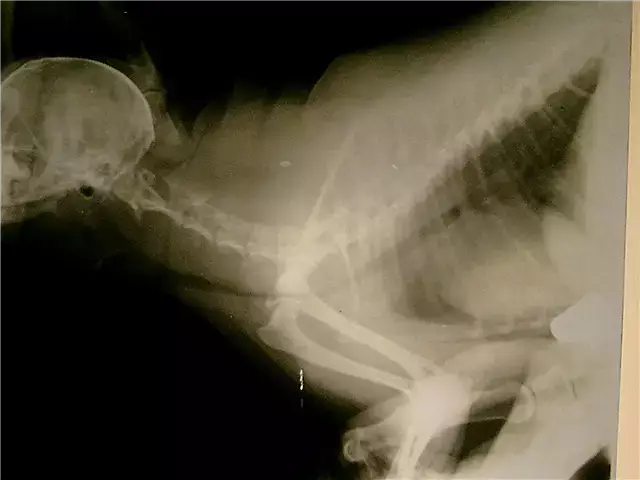- Author Rachel Wainwright [email protected].
- Public 2023-12-15 07:39.
- Last modified 2025-11-02 20:14.
Etonius
Instructions for use:
- 1. Pharmacological action
- 2. Release form
- 3. Indications for use
- 4. Contraindications
- 5. Instructions for use
- 6. Side effects
- 7. Storage conditions

Etonium is a drug belonging to the groups of antiseptic and disinfectants.
Pharmacological action Etonia
The therapeutic effect of the use of the drug Etonium is due to the presence in its composition of an ammonia derivative (actually the substance Etonium). The substance has bactericidal and bacteriostatic effects due to detoxification of staphylococcal toxin and a number of other pathogenic microorganisms, as well as due to disruption of the synthesis process in their cells.
Etonium is able to stimulate wound healing, regenerate areas of damaged tissue, and have a mild anesthetic effect.
Release form
In pharmaceutical chains, Etonius is represented in three forms:
- in the form of a white crystalline powder with a specific odor. The powder is highly soluble in water and alcohol;
- in the form of a paste with 7% active ingredient content. The ointment is packaged in cans of 20 g;
- in the form of an ointment, where the content of the active substance reaches 0.5% or 1%. The ointment is packaged in cans of 15 or 25 g.
Indications for use of Etonia
According to the instructions for Etonius, the drug is applied topically, as an anesthetic, antimicrobial agent, and also as a means of accelerating wound healing. Most often, the following cases become the area of application of the drug:
- purulent trophic ulcers (in particular, slowly healing purulent skin defects);
- cracks in the rectum, nipples;
- radiation damage to the skin;
- itchy dermatoses;
- inflammation of the oral mucosa (primarily stomatitis);
- inflammation of the gum mucosa (gingivitis);
- ulcers and inflammations (keratitis) of the cornea of the eye;
- otitis media or otitis media, other cases.
Contraindications

Before starting use, it is important to make sure that there is no hypersensitivity to any of the components of Etonium (this applies to all forms of release). Also contraindications for the use of Etonium in the form of a paste are gangrenous and purulent forms of pulpitis.
Instructions for use Etonia
According to the instructions for Etonium, the drug should be applied externally. It is intended for topical use.
Depending on the type of disease, the required dosage and form of drug release are selected.
So, in the treatment of ulcers, wounds, etc. it is recommended to use Etonium in the form of a 0.02-1% solution, made on the basis of a powder, or in the form of an ointment.
Treatment of ulcers of the cornea of the eye, keratitis and other eye lesions is carried out using a 0.1% solution of Etonium, which must be instilled in an amount of 1-2 drops three times a day for 10 days, no more. Treatment of tonsillitis, purulent otitis media occurs with the help of Etonium of the same concentration and with the same frequency. Most often, procedures are prescribed in the form of spraying with a solution or rinsing.
For stomatitis, it is recommended to apply a 0.5% solution of Etonium as an application to the affected area. The application is left for 15-20 minutes, the course of treatment lasts from 2 to 7 days.
Treatment of trophic ulcers, itchy dermatitis, pyoderma, burns of various etiologies (thermal, chemical, radiation) is carried out by applying 0.5-1% Etonium ointment to the affected area. The duration of treatment should not exceed 15 days, the shortest period of application of the ointment is 3 days.
Side effects of Etonia
The use of Etonium in some cases can cause hyperemia (redness of the skin) and allergic reactions in the form of itching. If any adverse reactions occur, the drug should be discontinued.
Storage conditions
It is recommended to store Etonium in a dry place protected from light penetration. The shelf life for the powder is 3 years, for the paste - 2.
Information about the drug is generalized, provided for informational purposes only and does not replace the official instructions. Self-medication is hazardous to health!






